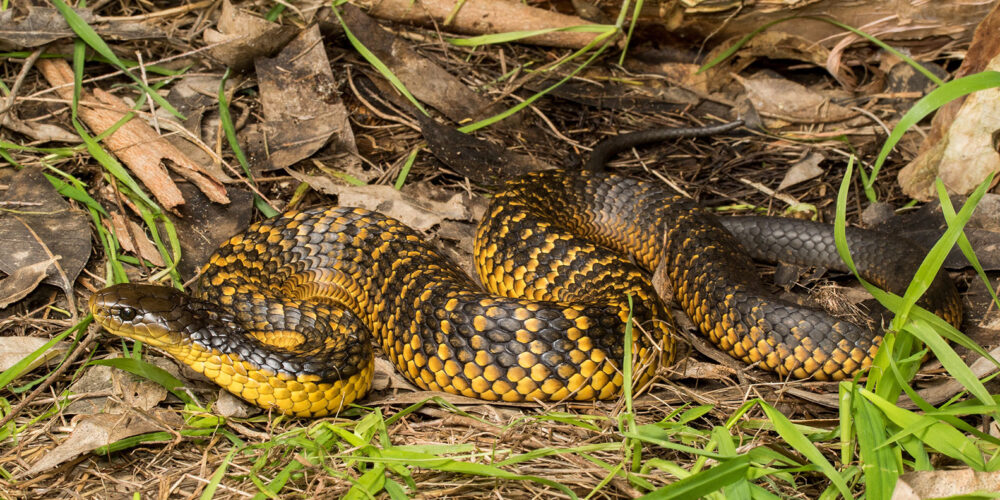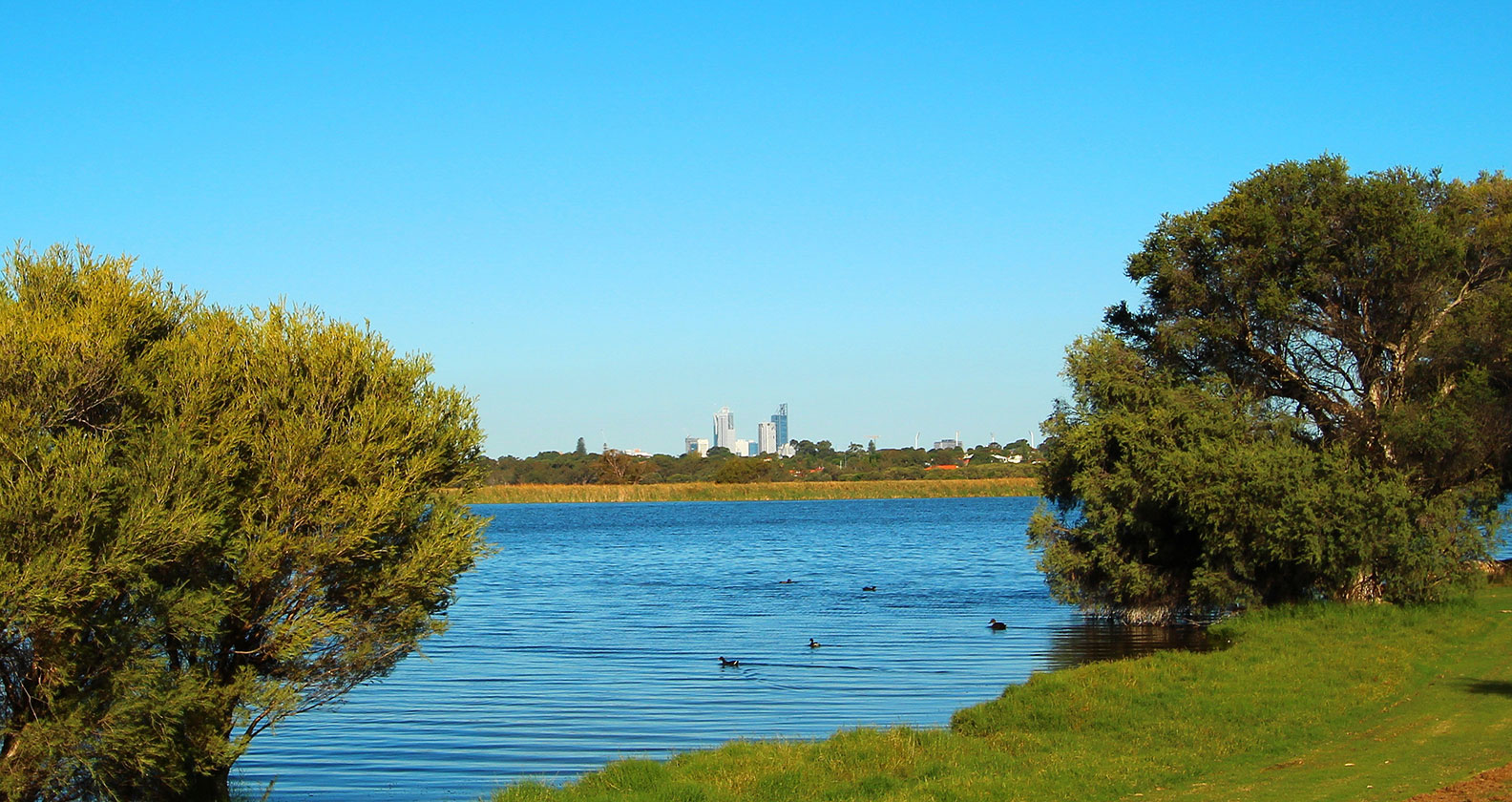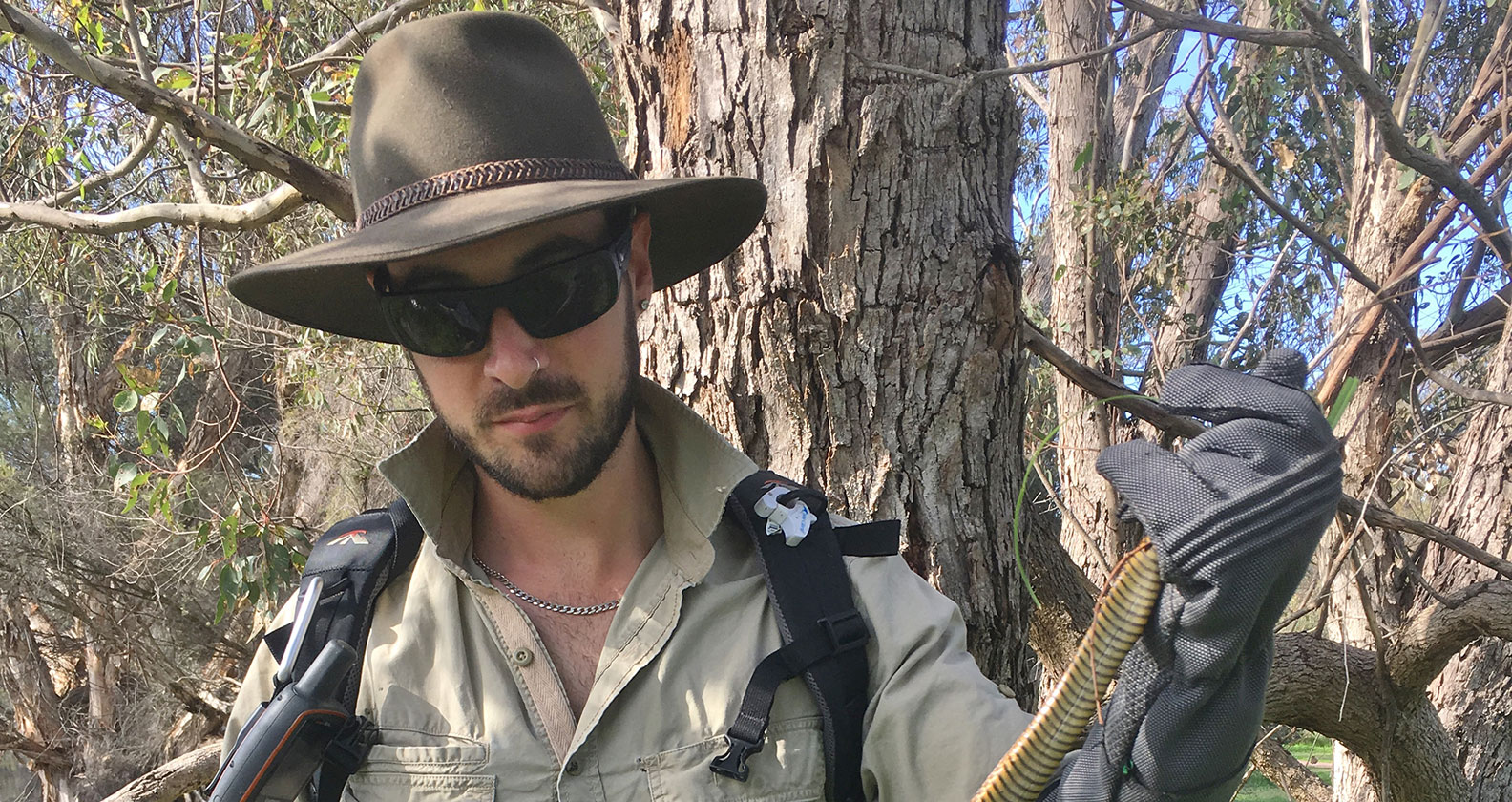Sick snakes a cause of concern for Perth’s wetlands

Perth’s wetland tiger snake populations are contaminated with toxic metals and many are in poor health – and that may point to problems for other fauna in these ecosystems.
As human activity expands and intensifies in our urban environments, native wildlife is forced to retreat to ever smaller spaces – the islands of green and blue in our cities.
Curtin University PhD candidate Damian Lettoof is finding that the fortunes of the western tiger snake (Notechis scutatus occidentalis) are very much tied to the impact of urban encroachment. And his latest research provides cause for concern – some populations of tiger snakes are in poor health, with high levels of metal contamination in their bodies, and they are confined to isolated pockets with little genetic diversity.
Of course, snakes aren’t the most popular of Australia’s wild fauna – they’re more feared than loved. But Lettoof, who is a lifelong snake enthusiast, points out that as a top predator, snakes are a vital part of the ecosystem, helping maintain a natural balance. And if they are in trouble in their remnant wetland havens, it is an indicator of problems for all other creatures living in the same habitats.
Lettoof’s PhD research at Curtin’s School of Molecular and Life Sciences found Perth’s tiger snakes are absorbing metal contaminants such as arsenic, cadmium, lead and mercury, in levels higher than expected, given that on the surface their environments look reasonably healthy.
But urban wetlands are particularly susceptible to contamination as stormwater and water from drains ends up there, bringing with it a variety of foreign elements. Contaminants may accumulate over a long period and even metals which are no longer used may persist in the sediment. These might come from landfill or other waste dumps, vehicles, roadworks or agricultural chemicals.
Lettoof has examined several wetlands across Perth, with a main focus on Herdsman Lake, just 5km north of the CBD. This is classic tiger snake territory and also a haven for birds, frogs and lizards.
Herdsman Lake also harbours concentrations of arsenic, lead, copper and zinc in sediments up to four times higher than government guidelines. And the reserve is all but cut off from other wetlands and green corridors, surrounded by a freeway, and residential and light industrial areas.

“Herdsman Lake is the best place in Australia to find tiger snakes. But they are in poor shape, poor body condition, slower and appear to have less energy,” Lettoof says.
“The tiger snake population is genetically isolated with low diversity, and all the snakes have a similar poor health profile. I see it as a contaminated island. They are trapped there. Other fauna such as lizards, frogs and fish are in the same situation.
“They also face other stressors, such as noise, light and the impact of cats, dogs and rodents. And we have found the presence of rat poison in tiger snakes, dugites and bobtails.
“We’re concerned that if the snakes are in poor health already, they can’t survive additional stress.”
Lettoof thinks because tiger snakes are relatively long-lived – 10 to 20 years in the wild – they are accumulating the contaminants slowly. He believes other animals such as frogs, which are the snakes’ main food source, must also be affected but may not show the physical effects of contaminants because of their much shorter lifespans.
“Frogs are like little sponges for everything in their environment, so they provide a direct pathway for contaminants to snakes as the top predator in the system,” Lettoof says.
“It’s been eye-opening to me that all the wetlands we’ve studied, including Bibra Lake, Joondalup and Yanchep, are both conservation reserves and popular recreational areas. They are seen as an attraction, but no-one is looking out for chemical contaminants. My research shows these wetlands are certainly exposed to contaminants, but no-one else is monitoring this aspect of their health.”
For this reason, it is difficult to determine the precise source of the contaminants, whether industrial or domestic, and from current activity or historic.
But he says there are things that can be done to protect wetlands, including industries adopting stricter spill management practices, and local and state governments installing stormwater filters to catch urban waste. Natural filtering can also be done through buffer zones of vegetation around wetlands but these plants need to be periodically removed and destroyed to remove sediment contamination.
“We shouldn’t be waiting until contamination is at a critical level,” Lettoof says. “We usually only study animal toxicity when we see a lot of them die.
“We continue to produce contaminants and there are many legacy contaminants from past actions. We need to understand what is there and what we are doing to the wetlands before they get to the point of collapse.”

Lettoof estimates he has caught 500 snakes as part of his research project, with the help of his research assistant or volunteers. While the catching process is not without risk, the group are experienced at the job and wear Kevlar bite-proof gloves. The snake is restrained and held by the head while samples are taken.
The tiger snakes are tested in two distinct ways – by taking a sample from their scales where contaminants build up in the keratin tissue, and from blood samples taken direct from the heart in a more delicate process which is done in the laboratory at the Curtin Perth campus.
The work is something of a dream job for Lettoof who confesses to always loving snakes. After doing bachelor and master degrees, he spent time travelling and working for research groups and environmental consultancies.
“I wanted to do a PhD and wanted to be working with snakes, and the opportunity presented at Curtin to look at the impact of urbanisation and parasites on tiger snakes,” he says.
“There are next to no ecotoxicology studies on reptiles in this country, so I’m carving a niche.”
He is keen to continue in the area as he develops post-doctorate ideas, including collaborative projects assessing other factors in tiger snake health.
“I realise a lot of people probably don’t care about what happens to snakes. But the key thing to realise is: if snakes aren’t doing well, then all the other species in the ecosystem and food chain are also likely in poor shape. They are a bio-indicator species.”
Damian’s top snake facts
- Snakes are very cryptic animals, so there are probably more snakes than we realise in our urban environment.
- Dugites are the most common snake in Perth, and usually prefer woodlands and open heath areas. Tiger snakes favour cooler wetland areas where there is a plentiful supply of frogs – their favourite food.
- You are most likely to see snakes in spring, basking in open grass areas.
- The best response if you see a snake is to give it space and leave it alone.
- If you come on a snake suddenly, back away slowly and put distance between you.
- Don’t stand still and wait for the snake to move away because it will see you as a threat if you are in its personal space and may react.
Hear more on The Future Of podcast
This article was inspired by an episode of The Future Of, the podcast where experts share their vision of the future and how their work is helping shape it for the better.
Subscribe to The Future Of on your favourite app or read other articles inspired by the podcast.
Researcher profile
Damian Lettoof is a wildlife ecologist and PhD candidate from the Behavioural Ecology Research Group in the School of Molecular and Life Sciences at Curtin. He is currently researching some of the impacts urbanisation has on wetlands and tiger snakes.


